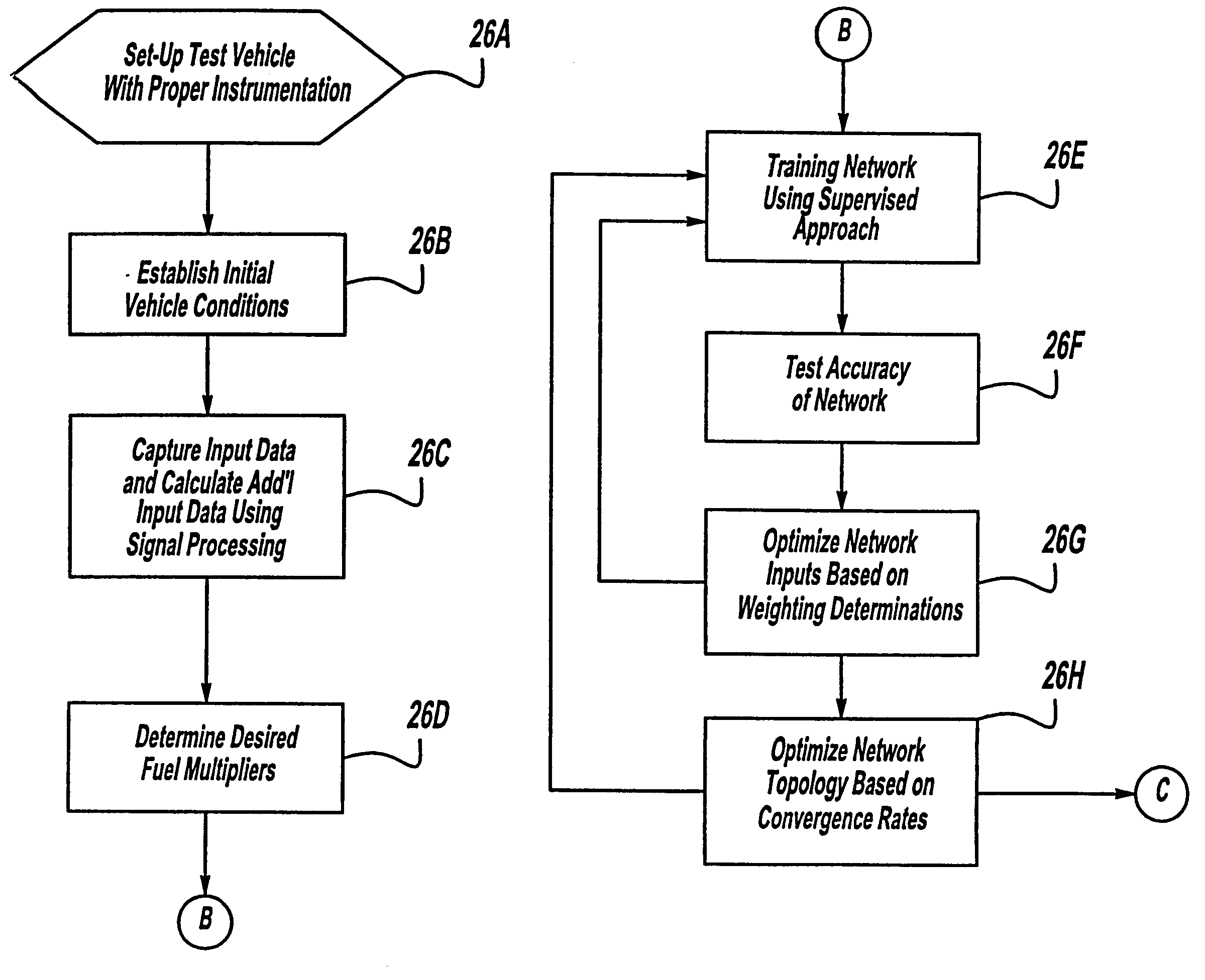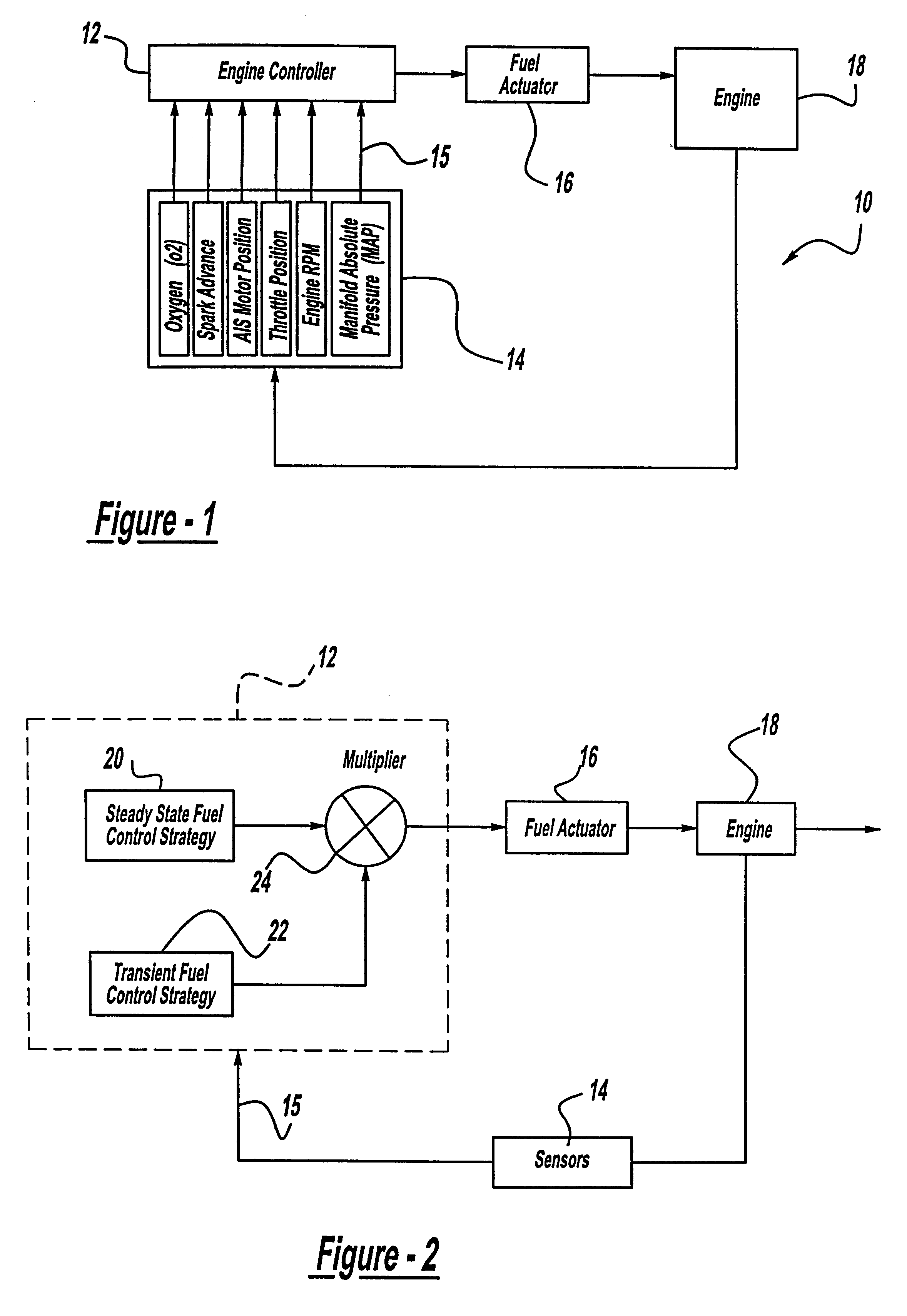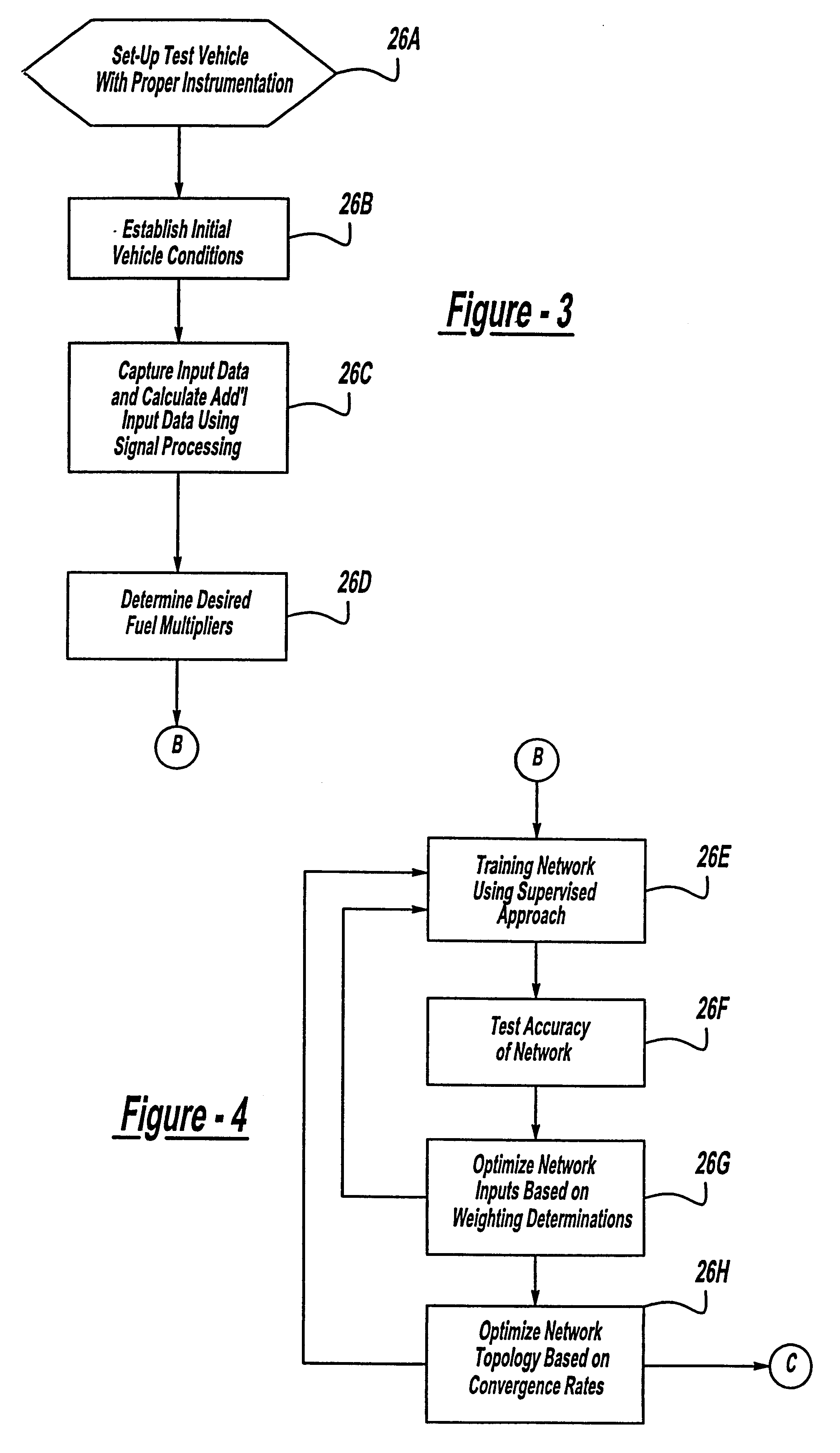Neural network based transient fuel control method
a transient fuel control and neural network technology, applied in the direction of adaptive control, electric control, instruments, etc., can solve the problems of time-consuming and costly process, more difficult to maintain this mixture,
- Summary
- Abstract
- Description
- Claims
- Application Information
AI Technical Summary
Benefits of technology
Problems solved by technology
Method used
Image
Examples
Embodiment Construction
FIG. 1 illustrates a vehicle fuel control system 10 is shown for a motor vehicle such as an automotive vehicle (not shown). The system 10 includes an engine controller 12 containing hardware and software necessary to control air / fuel ratio, spark advance, exhaust gas recirculation and other engine control tasks. The engine controller 12 receives information from a number of sensors 14 which may include, but are not limited to oxygen, throttle position, manifold absolute pressure (MAP), and engine speed (RPM), as well as computes additional information, such as spark advance position and automatic idle speed (AIS) motor position, from some of this detected information. Based on some of this information, the engine controller 12 then sends a signal to a fuel actuator 16 varying the fuel actuator's pulsewidth to adjust the delivery of fuel from the fuel actuator 16 into an internal combustion engine 18 in an amount necessary to achieve a predetermined air / fuel ratio.
Referring to FIG. 2...
PUM
 Login to View More
Login to View More Abstract
Description
Claims
Application Information
 Login to View More
Login to View More - R&D
- Intellectual Property
- Life Sciences
- Materials
- Tech Scout
- Unparalleled Data Quality
- Higher Quality Content
- 60% Fewer Hallucinations
Browse by: Latest US Patents, China's latest patents, Technical Efficacy Thesaurus, Application Domain, Technology Topic, Popular Technical Reports.
© 2025 PatSnap. All rights reserved.Legal|Privacy policy|Modern Slavery Act Transparency Statement|Sitemap|About US| Contact US: help@patsnap.com



